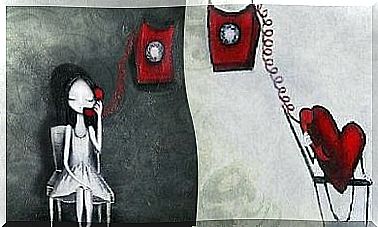What Is The Frustration-aggression Theory?

The theories that try to explain aggressiveness are multiple and, at least in appearance, logical. On this occasion, you will be able to learn about the theory of frustration-aggression, one of the most popular in its historical moment and the basis for other more current ones.
This theory gives a perhaps too simple explanation to the question of aggression, but its author was able to create a statement applicable to practically all situations of violence. Curious? Keep reading.
What is the frustration-aggression theory?
This theory was formulated by John Dollard and Neal Miller, two psychologists from the school of behaviorism who wanted to theorize about the causes of aggression. Back in 1939 they formulated the theory of frustration-aggression, in which this behaviorist tendency once again reduces to the stimulus-response one of the basic processes of behavior in society: violence.
However, Dollard’s psychoanalytic baggage prompted them to search for a theory that would capitalize on the strengths of both theories.
What does the frustration-aggression theory postulate?
The main hypothesis is that aggression is always a consequence of frustration and that this also works the other way: frustration always leads to some type of aggression. With these simple premises, Dollard and his collaborators sought to make predictions about when and against whom people were doing it.
But how do frustration and aggression work? Below you can read how these authors described the two processes separately.
Frustration
In this theory, frustration is understood as an interference in the sequence of behavior, that is, a person becomes frustrated if he does not get his wishes to materialize. This can occur for reasons that I will list later.
For example, if a child is given a bag of candy while watching a movie and is suddenly taken out of the room and the bag is taken away, they will not be able to complete either action. And you are likely to be frustrated, of course.
The theory also posits that the greater the frustration, the more intense the resulting aggression. If someone sneaks into the supermarket queue, for example, the probability that they will be singled out or recriminated increases or decreases depending on the position they have accessed or tried to access.
In addition, he says that aggression frees him from frustration, it accumulates . In this way, there comes a point that any small frustration can lead to intense aggression, a product of this accumulation.
The agression
Within the theory of frustration-aggression, aggression is behavior whose objective is to harm the person to whom it is directed. Aggression can be physical or verbal, direct or indirect.
However, aggression does not always reach the person who generated it directly. In these cases, displaced aggression is used, which consists of exerting violence on another target that shares some similarity with the original. In addition, if direct violence is hindered or prevented, indirect violence will be used – such as spreading rumors or making fun of someone.
Later, a study showed that those with high but unstable self-esteem quickly show hostility to frustration, continually on guard.
Against this background, this theory describes two ways to reduce aggression :
- Suppress frustration: if the trigger is eliminated, the consequence is naturally eliminated as well. An example would be that the person who just threw your coffee on the floor apologizes and invites you to another coffee.
- Catharsis: according to this method, translating frustration into action reduces individual activation and prevents future aggression.
The ramifications of the frustration-aggression theory
After this theory many others arose trying to develop their weak points. Ted Gurr, for example, applied this theory to the way social unrest originates as people’s aspirations and hopes are frustrated.
On the other hand, Engebretson posited in 1989 that those who are allowed to vent their anger in whatever way they prefer will be less activated afterward than those who are repressed. Does this mean that aggression must be allowed as a form of catharsis? The most obvious answer is no, but the debate is still open today.









